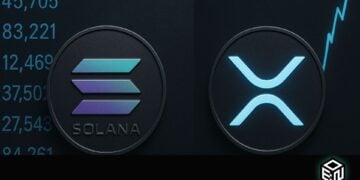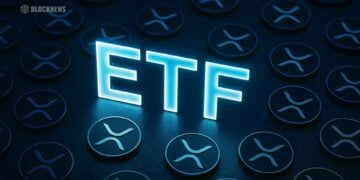- Osmosis iterates on concentrated liquidity to build out a new supercharged liquidity feature.
- Supercharged liquidity enables liquidity providers to set precise price ranges for swap execution in AMM DEX pools.
- Osmosis predicts this feature will increase capital efficiency by 100 to 300x.
Osmosis, the leading DEX on Cosmos, is enhancing liquidity provision and management with its new supercharged liquidity feature that expands upon Uniswap’s concentrated liquidity mechanism.
Concentrated Liquidity Explained
Decentralized exchanges commonly provide liquidity for executing swaps through an Automated Market Maker (AMM), where a liquidity pool is accessed directly to facilitate buy and sell orders. Through an AMM, trades can be executed faster.
However, tokens staked within AMM-facilitated liquidity pools are still subject to volatility because funds are distributed across entire price ranges of trading pairs. Due to this, AMM liquidity pools run the risk of price slippage (where the value of an asset being traded falls below its expected value post-trade) and impertinent loss (where the price of a staked token drops below its unstaked price because of low liquidity in the pool).
To maintain a balanced AMM pool and mitigate rapidly rising and falling liquidity levels, Uniswap implemented concentrated liquidity, enabling liquidity providers (LPs) to stake tokens within specific price ranges.
With concentrated liquidity, LPs add funds to a pool within hand-picked price ranges. When the AMM accesses the pool to execute a trade, buy and sell orders won’t be matched until asset prices within the pool approximate value to the set price ranges specified by LPs.
For example, in a pool featuring stablecoin pairs like USDC/USDT, where the spot price should ideally hover around 1, with concentrated liquidity, instead of distributing capital across the entire price spectrum from 0 to infinity, LPs can concentrate their funds within a narrower range centered around 1. This allows traders to benefit from lower price impacts because of increased depths of liquidity around specified price ranges.
Concentrated liquidity allows LPs to achieve significantly higher capital efficiency as their provided liquidity is concentrated within specific price ranges and insulated from AMM liquidity pool volatility.
Concentrated liquidity also allows for a brand-new order type known as a “range order,” where the AMM will match buy and sell orders not only when asset prices in a liquidity pool fall within a specified range, but fall within that range for a certain time duration.
Osmosis Iteration: Supercharged Liquidity
Osmosis has iterated concentrated liquidity to its new feature, supercharged liquidity, which maximizes the capital efficiency achieved through concentrated liquidity and takes it to a new level.
Osmosis-supercharged liquidity allows for even more specific price range settings, giving increased control to LPs over their positions. Supercharged liquidity further decentralizes AMM swap execution precisely because it offers LPs increased control over their positions.
According to estimates by Osmosis, this feature can potentially enhance capital efficiency by 100 to 300 times compared to Uniswap’s regular concentrated liquidity model. Osmosis is incentivizing LPs during the initial launch of supercharged liquidity to add funds to supercharged pools by offering a 5% migration bonus.
Conclusion
AMM DEXs distribute funds across the entire price range of trading pairs that comprise a liquidity pool, risking slippage and impertinent loss. Uniswap’s concentrated liquidity reduces such risks by enabling LPs to set price ranges so that buy and sell orders aren’t matched until liquidity pool asset prices fall to their specified range.
Concentrated liquidity grants LPs more control over how their liquidity is distributed across the pool and benefits traders as swaps can be facilitated without huge price impacts and value deficits between trading pairs.
Osmosis’ supercharged liquidity feature iterates upon concentrated liquidity by allowing LPs to set even more specific price ranges. With supercharged liquidity, Osmosis aims to maximize LP capital efficiency across AMM pools to achieve autonomous P2P trading at reduced fees.














